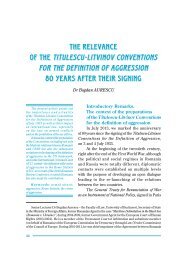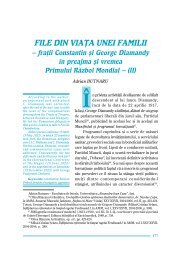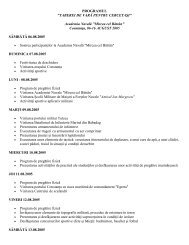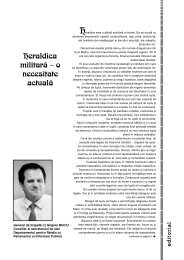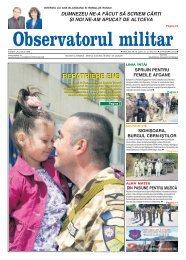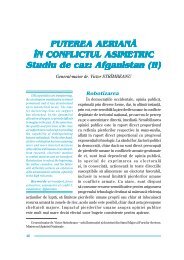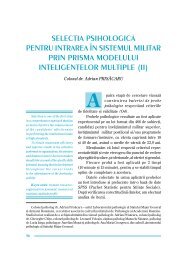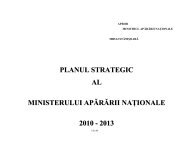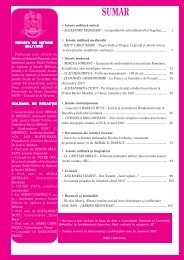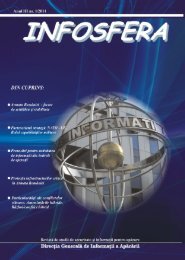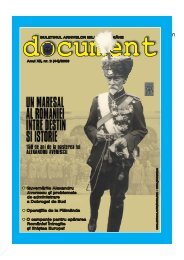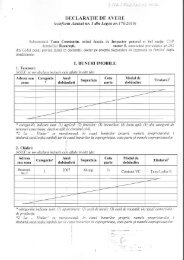Romanian Military Thinking
Romanian Military Thinking
Romanian Military Thinking
You also want an ePaper? Increase the reach of your titles
YUMPU automatically turns print PDFs into web optimized ePapers that Google loves.
Opinions • Arguments • Certitudes • Perspectives<br />
involving two sources of power: force and legitimacy. “People obey rules either out of fear<br />
or out of respect for authority. Civilisation and order are build on placing the force in the<br />
service of legitimate authority”.<br />
It is only in this point that we are able to grasp the arguments of the author’s option<br />
for the “military muscle”, for the “American military muscle”, as he states: “… both force<br />
and legitimacy remain essential to maintain order. Force without legitimacy produces<br />
chaos while legitimacy without force will be overthrown”.<br />
To conclude, we would like to add another comment, in the same comparative manner<br />
of the author. In our opinion, Robert Cooper’s ideas are similar to the cooperative security<br />
model promoted by Richard Cohen and Michael Mihalka, from George C. Marshall<br />
European Center for Security Studies 15 . Less rigorously than the two researchers, Cooper<br />
also offers a model for cooperative security. There are a lot of resemblances between<br />
the two models. Both plead for the importance of Europe’s role and its cooperative<br />
instruments from structures such as NATO and the European Union.<br />
Moreover, both studies present the world as divided in three segments. The comments<br />
on the Unites States’ role are also similar. But, in point of difference, while the Cohen –<br />
Mihalka model places NATO in the centre of the cooperative system, in Robert Cooper’s<br />
vision, the central point is the European Union.<br />
While the former model is a promoter of the American hegemonic position, the latter<br />
only suggests the importance of the “American military muscle”, drawing attention<br />
to the fact that the world should not be left in American’s hands too long.<br />
Furthermore, another difference lies in the fact that Cooper’s model highlights<br />
the image of an imperial world order that is centred on Europe. To build the security<br />
system, the first model presents a ring-shaped architecture: a European, a Eurasian<br />
and a global system, whereas Cooper’s world model is of three types: premodern, modern<br />
and postmodern.<br />
As for the common element – the individual as a primordial entity, the Cohen – Mihalka<br />
model approaches it directly. In the structure suggested by them regarding the two concepts<br />
that developed in the last century, “individual security” and “collective defence”, “individual<br />
security” is directly connected to it, as well as “promotion of security”, nevertheless,<br />
the ring of individual security lies in the centre of this architectural system, while all<br />
the other rings are circumscribed to it.<br />
Personally, I reckon that both studies are extremely interesting, as they have<br />
significantly contributed to the field of cooperative security research, and are therefore<br />
recommended for further reading.<br />
15 Cohen Richard, Mihalka Michael, Cooperative Security: New Horizons for International Order,<br />
George C. Marshall European Center for Security Studies, no. 3, May 2001. The model promoted by this<br />
center is also approached in Securitate pentru cooperare, solu]ia stabilit`]ii regionale, Centrul Tehnic-Editorial<br />
al Armatei, Bucure[ti, 2005, pp. 25-64.<br />
83



